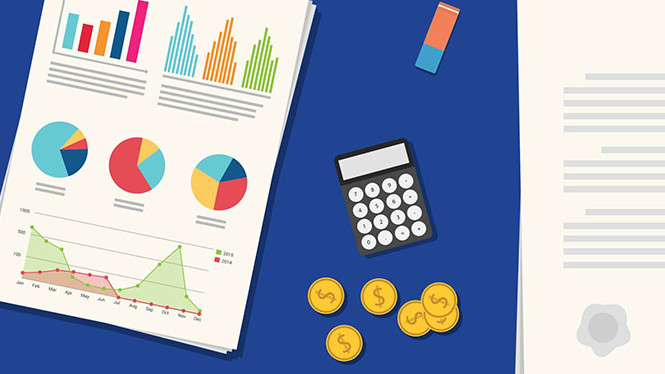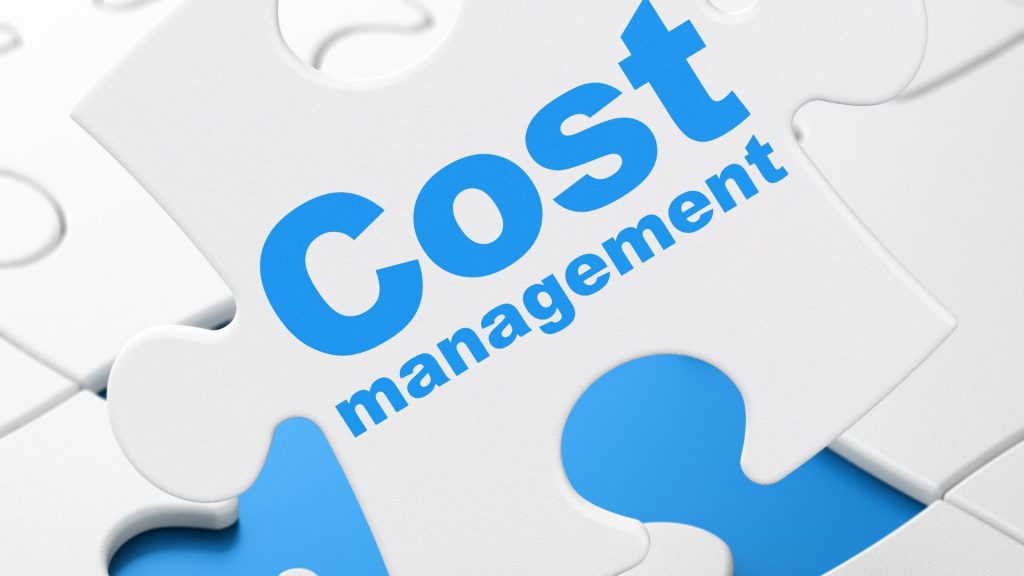According to recent studies, about 82% enterprises consider cost control a top priority for sustainable growth. It's no surprise that organizations are increasingly focusing on optimizing their costs to improve profitability and drive long-term success.
Whether you're a seasoned business owner or an aspiring entrepreneur, understanding cost control is crucial in navigating the competitive landscape and maximizing your business's profits. Let's learn about Cost Control with Bizzi in the article below!
1. What is cost control?
Cost control refers to the process of monitoring and managing costs in an organization to maintain financial stability and achieve profitability. This process involves identifying and analyzing various cost factors, such as operating costs, manufacturing costs, and overheads, and taking measures to reduce or optimize them.
This aims to strike a balance between minimizing costs without compromising product or service quality. By effectively controlling costs, businesses can enhance their competitiveness, improve operational efficiency, and generate higher profits, ultimately leading to growth and long-term success.
-

Understanding cost control is important in managing an organization
2. Importance of cost control
Controlling costs is important to organizations for many reasons. It helps maximize profits by optimizing costs, allowing businesses to generate higher profits and improve financial performance. Moreover, it ensures financial stability, minimizing the risk of crisis and cash flow problems.
Enterprise cost control facilitates strategic decision making by providing insights into expense reports and spending patterns. It also allows for informed resource allocation and investment choices. In short, cost control is a strategic tool that balances financial stability, profitability and growth, empowering organizations to thrive in a dynamic business environment.
3. Benefits of cost control
-
Cost savings
Effective cost control helps identify and warn against excessive, inefficient and wasteful spending categories. By implementing cost-saving measures, businesses can reduce costs, optimize resource allocation, and improve their financial position.
-
Profit improvement
By reducing costs and increasing efficiency, cost control management directly contributes to improved profitability. It enables businesses to generate higher revenue, improve profit margins and achieve sustainable financial growth.
-
Enhance cash flow
Reasonable cost control ensures that the business cash flow remains healthy and stable. By minimizing unnecessary costs and managing the billing cycle efficiently, organizations can maintain steady cash flow, meet financial obligations, and invest in growth initiatives.
-
Competitive advantage
Controlling costs allows organizations to offer competitive pricing while maintaining the highest levels of quality. This pricing strategy helps to attract customers, keep market share and gain an edge over competitors in the market.
-
Resource optimization
Cost control helps ensure that resources, including materials, labor, and equipment, are used efficiently, eliminating any underutilization or excess capacity.
-
Strategic decision making
Controlling costs provides decision makers with valuable information and data that greatly helps in strategic decision making. With accurate cost information, organizations can make informed choices about pricing strategy, product development, market expansion, and investment decisions.
-
Operational efficiency
Effective cost control streamlines processes and improves overall operational efficiency. Furthermore, it helps to identify bottlenecks, implement process improvements and optimize workflow, resulting in higher productivity and smoother operations.
-
Risk management
Organizations can reduce financial risk by proactively tracking and controlling costs. It helps to identify potential cost overruns, budget deviations or unforeseen costs, allowing proactive measures to be taken to prevent or reduce that risk.
-
Improve financial stability
It's no secret that maintaining a strong financial position is crucial for the sustainability of a business. Managing cost controls helps with financial stability by reducing unnecessary costs, avoiding unnecessary debt, and enabling organizations to weather economic uncertainties or market fluctuations.
-
Long term growth
By optimizing costs and improving profitability, managing costs controls freeing up financial resources that can be reinvested in growth initiatives. This capital can be used for research and development, marketing campaigns, talent acquisition, technological advancement or market expansion, driving growth and long-term success.
4. Key components of cost control
-
Budgeting and planning
An effective cost control process begins with creating a professionally executed budgeting process, outlining possible costs, and forecasting revenue for that period. On the other hand, planning ensures financial resources are allocated strategically and aligned with the business goals of the organization.
>> Read more: Change the way you manage your finances with budget management on Bizzi
-
Cost Analysis
Cost analysis involves examining the different cost components within an organization. It includes identifying direct and indirect costs, analyzing cost drivers, and understanding the factors that contribute to costs. This analysis helps identify areas where costs can be minimized or optimized.
-
Expense tracking
Tracking and monitoring costs plays an important role in controlling costs. Organizations must keep a close eye on costs and compare it to the planned budget. Furthermore, by tracking costs in real time, organizations can identify any deviations, take timely corrective measures, and ensure that costs remain within decided limits. .
5. Techniques and methods of cost control
Cut the cost
This involves identifying and implementing measures to reduce costs without compromising product or service quality. To effectively reduce costs, organizations can renegotiate supplier contracts, optimize operational processes, and improve efficiency.
Cost accounting
It is the process that focuses on tracking and analyzing the costs involved in producing goods or services. Cost accounting can help organizations understand cost structures, allocate costs accurately, and make informed decisions about pricing, resource allocation, and project cost control strategies.
Budget
In organizations, a budget is a financial plan that outlines expected revenues and expenses over a specific period of time. It serves as a benchmark for cost control efforts by setting limits and targets for different types of expenses. Monitoring actual costs against budget allows organizations to identify deviations and take corrective actions. This in turn will help your company's baseline.
Cost accounting standards
Standard cost accounting sets a predetermined standard cost for materials, labor, and overhead. In this process, actual costs are compared with standard costs, allowing organizations to identify and resolve cost discrepancies. This technique helps to measure cost performance and improve cost control measures.
Manage earned value
Earned Value Management (EVM) is a project management technique that integrates cost, schedule, and performance data. It helps to track the value of the completed work relative to the planned budget and schedule. EVM helps organizations effectively monitor project costs, evaluate performance, and take corrective actions.
Analysis of variance
Analysis of Variance (ANOVA) is a statistical technique used to analyze and understand the difference between planned and actual costs. ANOVA helps identify the cause of cost differences, such as changes in the price of raw materials or production inefficiencies.
Budget control
Budget control involves tracking and controlling costs based on an approved budget. It includes periodic reviews, tracking actual costs and actual expenditures, comparing them to budgeted amounts, and taking corrective actions as needed. Budget control helps organizations maintain financial discipline and ensures effective cost control.
Outsourcing
It is the process of delegating specific tasks or functions to external vendors or service providers. Outsourcing can help organizations reduce costs and reduce operational costs.
Continuous improvement process (CIP)
It is a systematic approach to driving continuous improvements in cost control. This involves identifying areas for improvement, setting goals, implementing changes, and measuring the impact of those changes.
By using these cost control techniques and methods, organizations can proactively manage costs, optimize resource allocation, and promote efficiency and financial stability.
6. Cost control in various industries
Manufacture
In manufacturing, cost control focuses on optimizing production processes, reducing material waste, and improving operational efficiency. Techniques such as lean manufacturing, just-in-time inventory management, and automation are used to streamline operations and reduce costs without compromising on quality.
Medical
Due to rising medical costs in the healthcare sector, cost control has now become a necessity. The cost control process in the healthcare industry includes strategies such as negotiating contracts with providers and service providers, implementing cost-effective healthcare technologies, and optimizing resource allocation.
Hotel
In the hospitality industry, cost control is achieved by optimizing costs related to food and beverage, labor and energy consumption. In addition, it involves effective inventory management, menu techniques to optimize profitability, implementation of energy-saving measures, and optimization of staffing levels while maintaining service quality. service.
Retail
In the retail sector, cost control focuses on inventory management, operational cost reduction, and supply chain optimization. Techniques such as efficient inventory systems, supplier negotiations for favorable pricing, shrinkage monitoring, and cost-effective marketing strategies are used to achieve these goals.
Build
Cost control reduces project costs, optimizes material usage and improves labor productivity in the construction industry. The following techniques are used to control costs and improve project profitability in the construction industry: value engineering, effective project planning and scheduling, accurate cost estimation and execution diligent shopping.
Information technology
Controlling costs in the IT industry requires managing costs related to hardware, software, and technology infrastructure. This involves techniques such as careful selection of technology solutions, leveraging the cloud for cost-effective resources, optimizing software licensing, and implementing service management practices. effective IT services.
Transportation and logistics
Cost control in transportation and logistics focuses on fuel costs, fleet management and supply chain optimization. Strategies include route planning and optimization, fuel economy programs, load consolidation, efficient maintenance practices, and leveraging technology for real-time monitoring and resource usage.
Professional service
In professional services such as consulting or legal firms, it includes managing general costs, optimizing project management processes, and ensuring efficient resource allocation. Techniques can include project budgeting and monitoring, optimizing staffing levels, leveraging technology for document management and collaboration, and adopting efficient workflows.
7. Cost control strategies in business
Inventory management
In this strategy, inventory levels need to be managed effectively to avoid overstocking or understocking. By monitoring and controlling inventory, organizations can minimize shipping costs, reduce the risk of obsolete inventory, and optimize cash flow.
-

Inventory management as a cost control strategy
Supplier management
This focuses on developing strong relationships with suppliers to negotiate favorable prices, terms and conditions. Furthermore, effective supplier management also involves selecting reliable and cost-effective suppliers, maintaining clear communication, and fostering cooperative partnerships to save money. costs and improve overall supply chain efficiency.
Process optimization
Process optimization aims to streamline operations, eliminate inefficiencies and reduce costs. This is done by analyzing and improving workflows, identifying bottlenecks, automating repetitive tasks, and enhancing productivity through continuous improvement initiatives.
Pricing Strategy
Pricing strategy involves establishing competitive pricing that balances customer value and profitability. This may include strategies such as value-based pricing, cost-plus pricing, or dynamic pricing. By analyzing market dynamics, customer needs, and cost structures, organizations can optimize pricing to maximize revenue and achieve profitability.
8. Cost reduction strategy
Implement a well-thought-out business cost reduction strategy by identifying areas where costs can be reduced without compromising quality or performance. This may involve renegotiating contracts with suppliers, optimizing operational processes, improving energy efficiency, or implementing technology solutions that automate tasks and streamline operations.
Financial control
By establishing financial controls, you can ensure budget guidelines are followed, which will prevent overspending. Expense approval processes, setting spending limits, and implementing monitoring systems to detect any potential financial irregularities, are some examples of financial controls.
Performance measurement
Measuring performance against cost goals and benchmarking is one of the most effective ways to keep costs under control. To gauge the effectiveness of your cost management efforts, you can track key performance metrics related to cost, such as cost per unit, cost variance, or cost-to-cost ratio. revenue.
9. What are the key performance indicators for cost control?
Many key performance indicators (KPIs) are used to measure success.
Cost difference
Cost variance is a key performance indicator that measures the difference between the actual cost of a project, process, or activity and the planned or budgeted cost. It helps to evaluate the effectiveness of cost management by determining if the actual costs are over or below the budgeted amount.
Cost of Goods Sold (COGS)
Cost of goods sold is a metric that represents the direct costs incurred in producing goods or providing services. It includes costs such as raw materials, direct labor, and direct costs. Cost of goods sold monitoring helps assess the effectiveness of cost control measures and determine the profitability of a product or service.
Return on Investment (ROI)
ROI measures the return and financial performance of an investment by comparing the profit or profit generated from the investment with its cost. It is calculated by dividing the net profit or return on investment by the initial investment cost. ROI provides insight into the effectiveness of cost allocation and helps gauge the overall success of an investment.
Gross profit margin
Gross profit margin is a metric that calculates the percentage of revenue that is left after deducting direct costs related to producing goods or providing services. It shows profitability at the beginning of the value chain. By tracking gross margin, you can gauge the pricing strategy, cost effectiveness, and overall profitability of a product or service.
Operating costs
Operating expenses, also known as OPEX, represent the ongoing costs of running a business, excluding cost of goods sold. It includes expenses such as rent, utilities, salaries, marketing, and administrative costs.
10. Technology and tools for cost control
In the world of cost control, leveraging technology and using the right tools can greatly enhance an organization's ability to effectively monitor and manage costs. From automation to data analytics, these technology solutions provide valuable insights and streamline cost control processes:
Cost control software
Cost control software plays an important role in helping organizations effectively manage and optimize their costs. These software solutions provide features such as budget tracking, cost monitoring, analytics and reporting, allowing businesses to identify cost-saving opportunities, streamline processes, and deliver informed financial decisions.
These cost control software solutions can empower organizations to proactively manage costs, reduce wasteful spending, and achieve greater financial performance.
Data analysis and reporting tools
Data analysis and reporting tools play an important role in extracting valuable insights from data and presenting them in a meaningful and actionable format. These tools enable businesses to analyze large data sets, uncover patterns, trends, and anomalies, and make informed decisions based on data-driven insights.
Enterprise resource planning (ERP) systems
Enterprise resource planning (ERP) systems are comprehensive software solutions that integrate various core business processes and functions into a single system. These systems facilitate efficient management of resources, streamline operations, enhance collaboration, and provide real-time visibility into business data.
These ERP systems help organizations optimize their processes, improve efficiency, enhance data-driven decision making, and drive overall business growth.
Cloud-based solution
Cloud-based solutions have revolutionized the way businesses operate by providing flexible and scalable software and infrastructure services over the internet. These solutions offer many advantages, including cost savings, ease of implementation, accessibility, and automatic updates.
Automation and artificial intelligence
Automation and Artificial Intelligence (AI) play an important role in controlling costs by streamlining processes, improving efficiency and providing valuable insights for good decision making. than. These technologies automate repetitive tasks, reduce manual errors, and enable businesses to optimize their cost management practices.
11. Best practices for effective cost control
- Set clear goals and objectives: Clearly define goals, cost control goals in line with the overall business strategy. This provides a clear and focused direction for cost management efforts.
- Conduct regular cost analysis: Regularly analyze and review costs across different areas of the business to identify inefficiencies, cost savings opportunities, and areas for improvement.
- Perform powerful budgeting and forecasting: Develop comprehensive budgets and accurate financial projections to set cost goals and track performance against those goals.
- KPI tracking: Define and monitor relevant KPIs to measure cost performance, such as cost variance, cost of goods sold, and gross margin. This helps to identify deviations and take corrective actions.
- Emphasize cost awareness and accountability: Promote a cost-conscious culture in the organization by promoting cost awareness, accountability, and accountability at all levels. Encourage employees to contribute cost-saving ideas.
- Streamline processes and eliminate redundancy: Continually review and streamline business processes to eliminate unnecessary steps, reduce waste, and optimize resource usage.
- Supplier management: Negotiate favorable terms with vendors and suppliers, explore competitive pricing options, and maintain strong relationships to ensure cost-effective procurement.
- Embrace technology and automation: Leverage technology and automation tools to streamline cost control processes, improve accuracy, and gain real-time cost visibility.
12. Challenges in implementing cost control
- Monitor and analyze costs: Implement a robust system for tracking and analyzing costs across different departments and projects to identify cost drivers and areas of improvement.
- Expense tracking and reporting: Implement effective cost tracking mechanisms and reporting systems to provide accurate and timely cost information to stakeholders.
- Employee engagement and communication: Engage employees at all levels by providing training and awareness programs on cost control strategies. Promote a cost-conscious culture through regular communication and incentives.
- Change management: Address resistance to change and ensure smooth execution of cost control initiatives through effective change management practices.
- Continuous improvement: Encourage a continuous improvement mindset by regularly evaluating cost control strategies, seeking feedback from stakeholders, and adapting to changing business needs.
- Risk management: Identify and manage potential risks that could affect cost control efforts, such as market fluctuations, regulatory changes, and unforeseen events.
- Benchmarks and best practices: Conduct benchmarking exercises to compare cost control practices with industry peers and apply best practices to improve cost management.
By implementing these best practices, organizations can increase their efforts to control costs, optimize resource allocation, and achieve sustainable financial performance.
13. Future cost control trends
Here are some future trends in cost control:
-
Digital transformation in cost control
The adoption of digital technologies, such as cloud computing, automation, and artificial intelligence, will revolutionize cost control practices. Organizations will leverage advanced tools and analytics to optimize cost management, improve efficiency, and gain real-time insights into financial data.
>> Read more: Enterprises control costs effectively thanks to a superior combination
-
Sustainability and green cost control
With an increasing focus on environmental sustainability, organizations will integrate green practices into their cost control strategies. This includes reducing energy consumption, optimizing waste management and implementing sustainable procurement practices, ultimately leading to cost savings and a positive impact on the environment.
-
Predictive analytics for cost control
Predictive analytics will play an important role in controlling costs, enabling organizations to predict cost trends, identify potential risks, and make proactive decisions. By leveraging historical data and advanced algorithms, predictive analytics enhances forecast accuracy and improves cost control strategies.
-
Risk management in cost control
Effective risk management will become an integral part of cost control. Organizations will proactively identify and manage risks that can affect cost performance, such as supply chain disruptions, market volatility, and regulatory changes. This will involve implementing robust risk mitigation strategies and contingency plans.
-
Control costs in the age of disruption
Rapid technological advancements and market disruptions will require agile cost control activities. Organizations will need to adapt quickly to changing market conditions, adopt flexible cost structures, and leverage innovative solutions to remain cost-effective and competitive.
Bizzi Expense – Comprehensive cost control solution for businesses
Bizzi Expense To be cost management software advanced, providing tools to support businesses in managing, monitoring and controlling comprehensive expenses from a single platform. Designed to minimize errors and optimize processes, Bizzi Expense saves time for the accounting department and provides a transparent and accurate financial picture for businesses.

Outstanding features help Bizzi Expense bring outstanding benefits to businesses:
Set up flexible spending policies
Allows setting specific spending limits for each department or individual, with the feature of automatically detecting over-budget expenses, helping to control spending effectively.
Build a cost approval process
Bizzi Expense automates the expense creation and approval process, ensuring transparency and accountability in financial management, minimizing approval delays and spending errors.
Budgeting by department and project
Easily allocate budgets to each department or project, helping businesses control finances according to each goal and optimize resources.
Real-time expense tracking
All expenses are automatically recorded, categorized by category and department, providing an instant and accurate view of your financial situation.
Cost and budget reporting dashboard
The system provides detailed cost dashboards, helping leaders quickly grasp trends and make strategic financial decisions.
Integration ERP system
Bizzi Expense integrates seamlessly with ERP systems like QuickBooks, SAP, and Oracle, ensuring financial data is constantly updated and accurate.
Sign up now for a 6-month free trial with Bizzi Expense and discover the optimal expense management solution for your business: ttps://bizzi.vn/dang-ky-dung-thu/
By leveraging Bizzi's cost management solution, organizations can streamline their cost control processes, reduce manual effort, enforce policy compliance and gain better visibility about costs. This ultimately helps to optimize costs, improve financial management and promote overall cost control efficiency.
In short, effective control of business costs is one of the core factors for businesses to maintain competitive advantages and sustainable development in a challenging environment. Effective cost management and monitoring helps businesses optimize resources, minimize waste and ensure financial transparency.
At the same time, applying modern technology will help businesses automate processes, capture real-time data and make accurate financial decisions. This not only creates a solid foundation for long-term plans but also promotes sustainable and stable growth for businesses.




